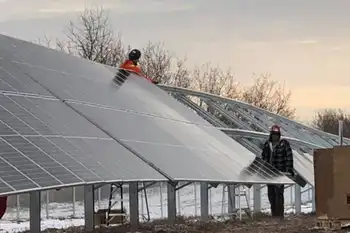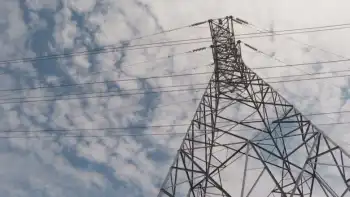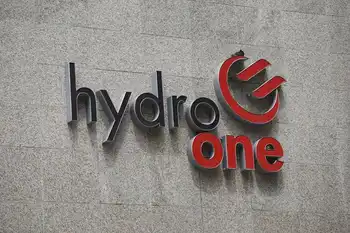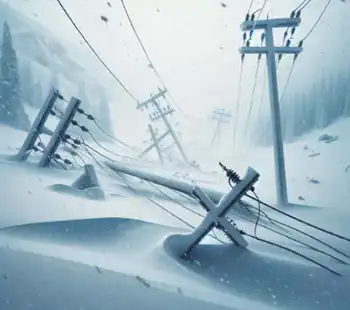Emission rules have holes
OTTAWA, ONTARIO - Ottawa appears set to announce a measure that would let industries evade its new rules on climate-change emission cuts, environment groups say.
Details are expected in the new year, when the Conservative government is to announce draft regulations for greenhouse-gas emission caps and timetables for reductions, likely up to 2015.
But critics say the Conservatives will likely let big polluters that exceed their emission limits pay into a technology investment fund instead of making actual cuts.
They call the move hot air, arguing it would allow the polluters and the government to claim targets are being met while emissions continue to rise.
Environment Minister Rona Ambrose has said several times over the past few weeks that Ottawa will let big companies write off excess emissions through contributions to a fund.
But she hasn't said whether such payments would be limited.
The climate-change plan of the previous Liberal government — scrapped by the Conservatives — included a similar fund for the large emitters.
Former prime minister Jean Chrétien included it at the insistence of the oil and gas industry.
But the companies would have been allowed to pay off only one-fifth of their required 45 million tonnes of reductions.
While government officials say details of the fund are still being worked out, a source said the decision has been made to eliminate the cap.
"It makes no sense... but it looks like that's the way they're going," said Matthew Bramley, of the Pembina Institute, an independent, not-for-profit environmental policy research and education organization.
The policy would cover Canada's 700 largest industries, including oil and gas producers, electricity generating stations, steel mills and manufacturing plants.
They'd contribute a payment — the amount not yet announced — for every tonne of carbon emissions over their cap.
Ambrose says the fund would support development of new technologies that combat climate change.
"The idea is that if, once targets are in place, if an industry sector goes over their target, based on carbon price, they will be able to pay into the technology fund," she said in a recent interview.
"That money in the technology fund will then be reinvested back into that sector for clean-air technology for reductions of emissions.
"It's revenue neutral; it helps industry keep the money in the country, which is what their preference is, and to keep it coming back into their sector."
Critics say there's no guarantee the money going into the fund would actually lead to emissions cuts, especially within the time period when they're supposed to be achieved.
"Paying into a fund whose efficacy is unclear — that's a very different thing from reducing emissions," Bramley said. "If that were allowed, you'd be in a situation where whatever target you announced would be meaningless.
Complying with the rules is not the same as meeting reduction targets, said Eric Haites, a climate change expert with Margaree Consultants Inc., in Toronto.
As well, if the government sets a relatively low fee for each tonne of carbon paid it could undermine the emission-trading system it also plans to establish.
Trading schemes let companies that are under their emissions caps sell credits to those that are over.
But if the fund price is low, they'd simply abandon the trading system and make their payments into the fund, Bramley said.
"You'd essentially kill it (trading)."
Even if the Canadian fund's contribution cost were about the same as the trading price, companies would opt for the fund, Haites said.
Ambrose hasn't said what the fund price would be, but indicated in the interview she wants to abandon the $15 per tonne cap imposed — again at the insistence of the oil and gas industry — by the Liberals.
The industry would oppose any move to increase the price, said Pierre Alvarez, president of the Canadian Association of Petroleum Producers.
The price in Europe, the world's largest carbon-trading market, for emissions in the period that would be covered by Ottawa's policy is equivalent to about $23, making the current fund price attractive.
Related News
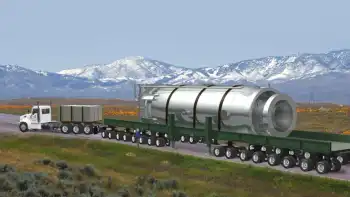
Modular nuclear reactors a 'long shot' worth studying, says Yukon gov't
WHITEHORSE - The Yukon government is looking for ways to reduce the territory's emissions, and wondering if nuclear power is one way to go.
The territory is undertaking a feasibility study, to determine whether there's a future for SMRs — small modular reactors — as a low-emissions alternative to things such as diesel power.
The idea, said John Streicker, Yukon's minister of energy, mines and resources, is to bring the SMRs into the Yukon to generate electricity.
"Even the micro ones, you could consider in our remote communities or wherever you've got a point load of energy demand," Streicker said. "Especially electricity demand."
SMRs…

